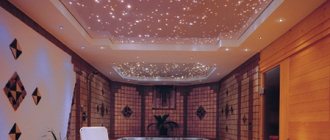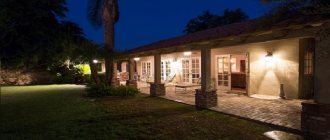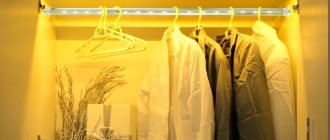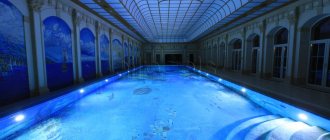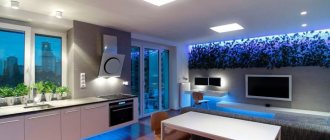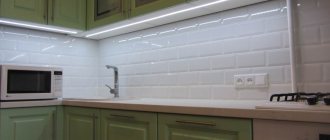Lighting architectural buildings at night solves at least 2 problems:
- Functional - to create comfort and safety for residents, without creating light pollution (color noise), without distracting drivers;
- Aesthetic - to transform city streets, giving them memorable features. On holidays and weekends, lighting design makes a greater impression on residents and guests of the city.
The XLight company produces a full cycle of work on architectural lighting, design, production and installation of LED architectural equipment for buildings, bridges, towers and other structures.
Main types of architectural lighting for buildings
For the decorative design of architectural structures, three types of lighting are used: solid, accent, contour.
| Types of architectural lighting | Usage | Examples |
| Solid | Excellent for large objects created from attractive relief material, for example, decorative or natural stone. Such lighting will highlight the entire façade of the building. It is performed with floodlights installed on the ground (ground) or on special supports. Often used to illuminate historical buildings of past centuries and temples | Church of the Intercession on the Nerl in Vladimir Temple of the Beheading of John the Baptist in Brateevo |
| Accent | Illumination of individual elements is considered a more economical and delicate decorative method. In this way, attention is focused on the most beautiful places of the building: columns, balconies, balustrades, window openings. | Vakhtangov Theater in Moscow Lighting of a shopping complex |
| Contour | This is a novelty in modern lighting design. It is implemented using linear lamps, flood light sources and LED strips. Such materials are fixed on the façade of the architectural structure using special guide elements. The main task is to emphasize the main elements of the building with contours: geometry, perimeters, functional and advertising elements. They are used to illuminate buildings built in a modern style: shopping and entertainment complexes, office buildings. | Lighting of the exhibition complex in Novosibirsk External store lighting |
Kinds
All existing varieties of such devices can be divided into flood light devices, local and hidden lighting.
- Spotlights are halogen or LED models with a bright and directional light output. Depending on the type of location, they can be panoramic or angular.
- Built-in varieties include wall sconces in the form of lanterns.
- Floor lamps belong to the class of double-sided lamps. These sconces are functional and suitable for lighting entrance areas, adjacent areas, as well as signage signs. They can be used to fill the main space with light, to design a veranda or terrace, or to illuminate small areas of the facade.
In addition to these varieties, linear or tape-type products are popular options. These are special diode LED lamps in the form of a flexible strip. LED strip lighting allows you to identify architectural elements, highlight the contours of the roof, and create an interesting pattern. It can be hidden behind the cornice, stucco molding, and elements of the entrance group.
Ground varieties are fixed near the building. More often the base is a concrete base, tiles or asphalt. Such models are protected from moisture and accidental mechanical damage. During installation, you can give them the desired angle of inclination of the light flux. This allows you to create a special light composition. Lighting sources can have different shapes (from retro and classic models of lamps to ultra-modern new products or products in the form of figures, as well as overhead analogues).
Color design of buildings
Analog lamps (spotlights) for architectural lighting of buildings with a single “natural” glow are already becoming a thing of the past. The latest LED technologies allow the use of various color options - classic white: cold, natural, warm, as well as red, blue, green, yellow. The latter can be mixed to form a wide variety of colors in the palette. In this case, color mixing occurs when the LEDs are close together.
- For houses and buildings built in a classical style, the best lighting solution is in classic white tones: it will not cause unnecessary emotions or discomfort during perception - it will always be advantageous.
- The best option for decorating modern buildings, shopping, office and entertainment centers is RGB color lighting: it will always attract maximum attention. Using dynamic color management (DMX) will allow you to customize any dynamic effect of combining and shimmering different colors.
- For decorative, advertising and artistic-architectural lighting, a complex option is used, which combines different colors, styles, and equipment. In this case, individual creative solutions are always used.
What to consider when designing a lighting system?
The creation of a lighting system for a particular object should begin with the development of a design project, which will not only allow you to have a clear idea of the final result of the work, but also calculate the required number of lamps and select the most suitable type of equipment. To create lighting that can really effectively and expressively highlight the beauty of an object, it is necessary to take into account the following factors when developing a project:
- The location of the object and its role in the overall urban picture. The lighting of a residential building will be significantly different from the lighting of an entertainment center or an ancient cathedral;
- Its size, texture, color of facing materials and style of execution. By default, whether a building belongs to one or another architectural style determines the style of the lighting system itself, which in no case should contradict it;
- The presence or absence of illumination of neighboring buildings and structures, which can affect the result. Even the glare from the most ordinary street lights can present an obstacle that must be skillfully mitigated;
- The distance from which the object is supposed to be observed and viewing angles. Taking these facts into account, it will be possible to create a backlight that will highlight the dignity of the object from all visible sides in the most favorable light;
- Possibility of installing one or another type of lamps. Due to the proximity of the object to the sidewalk or roadway, or other object, it is not always possible to use equipment such as floodlights.
You also need to ask whether there are laws or rules that regulate the order and organization of street lighting. For your information, in Moscow in 2008, the law “On the concept of a unified lighting environment of the city of Moscow” was adopted and approved, which has clear recommendations and restrictions not only regarding the arrangement of outdoor lighting, but also the placement of outdoor advertising.
Thus, not all buildings are allowed to be highlighted using flood lighting.
Statics and dynamics. DMX technology
Despite the fact that architectural lighting is used only at night, and in Russia the daylight hours in winter are short, today static lighting of buildings is not economically viable. To save energy on weekdays, less resource-intensive light sources should be used, and on holidays and weekends, on the contrary, a bright non-standard glow allows you to distinguish a building from others and attract attention with the play of colors. To do this, they use DMX technology, which allows you to control the light dynamics.
The essence of technology
DMX was originally the standard for lighting in the cinema and exhibition industries. Today this technology is also used in architecture. It allows you to control different groups of lamps, brightness and color of light. Separate groups can be, for example, the roof, facade, columns, window openings, contour lighting, etc. Within each group there are subgroups - by brightness, color, etc.
At the same time, for everyday life, the glow of one group is enough (you can set the optimal intensity), and on holidays, weekends, festivals, significant sports or other events, you can turn on all groups, increase the intensity of their glow, and also create various color shifts - a smooth or sharp transition one color to another, mixing colors and other effects. Grouping reduces the resource intensity of an individual lamp that has one signal; it is assigned one address - as a result, the overall cost is reduced.
Special equipment is used to control the dynamics of light.
More details in our video:
Selecting luminaires and lighting control methods
The choice of types of lamps depends on the type and purpose of the illuminated room. When designing complex lighting installations, such as large office buildings, luminaires and switch locations are usually chosen by designers and architects. Then the designers, in close cooperation with lighting equipment suppliers, carry out illumination calculations for all rooms and arrange the fixtures. When designing lighting for ordinary rooms, the designer performs all the work himself. Preference is given primarily to lamps with maximum luminous efficiency and service life. But it is necessary to take into account the characteristics of the emission spectra of lamps, taking into account their effect on the human body. When choosing lamps, you should take into account the color rendering index, the coefficient of pulsation of illumination, as well as indicators of glare and discomfort. Descriptions of many types of the most widely used lighting fixtures are given in the “Light Fixtures” section.
Selecting lighting control methods. To turn on lamps in small rooms, as a rule, switches are installed indoors on the side of the door handle. In large rooms it is more convenient to control lighting from one place. If there is a security post, then the lighting is controlled from this post. In long corridors, it is convenient to install switches at both ends of the corridor, which allow you to control lighting from two or more places.
At high powers of group lighting lines, magnetic starters (contactors) are used to turn on the lamps, the control coils of which are switched either by conventional switches or using a push-button station. The push-button post contains two separate buttons for turning the lighting on and off. When the lighting is working, the on state of the magnetic starter is ensured by its self-locking.
In bathrooms, showers and bathrooms, switches are installed outside these rooms.
Construction and installation works
Installation of lamps and electrical networks on the facade has its own characteristics: the work is carried out at high heights from car lifts. Here the qualifications of electricians come first. Since even to restore one poorly made contact between conductors, it is necessary to call a bucket truck to the repair site.
Linear lamps that form one luminous line can cause many problems. Here, an error of 10–20 centimeters when measuring the length of the facade or its parts is enough for one lamp to be superfluous, or, on the contrary, there may not be enough lighting fixture to complete the line.
